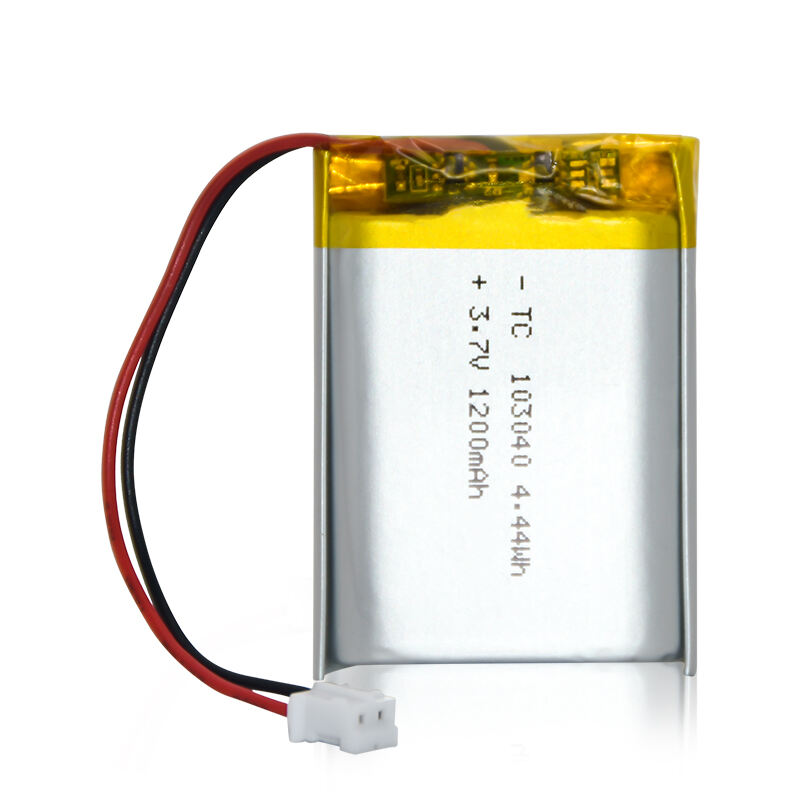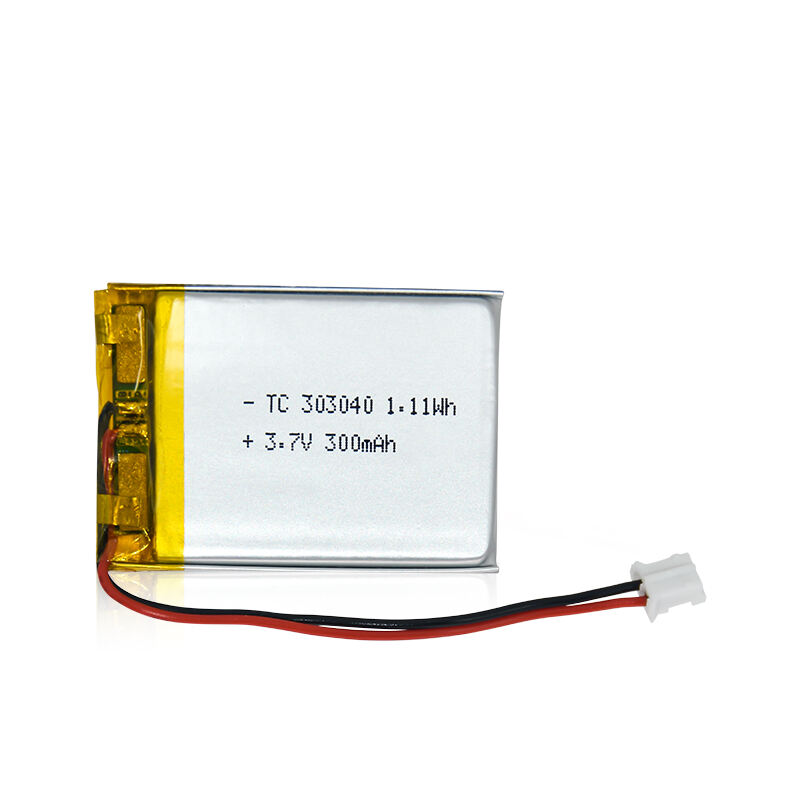Орчин үеийн цахиурын технологийн чадлыг ойлгох
Өнөөгийн энерги хэрэглэдэг дэлхийд цилиндрийн лити батерей зөөврийн цахилгааны шийдлийн үндсэн суурь болон гарч ирсэн. Эдгээр инновацич байдалтай энергийн хадгалалтын төхөөрөмжүүд нь ахиулагдсан химийн найрлагыг үр дүнтэй загварчлалтай хослуулан найдвартай, урт хугацаагаар ажиллах цахилгааны эх үүсвэрийг олон талын хэрэглээнд нийлүүлдэг. Цахилгаан тээврийн хэрэгслээс эхлээд хэрэглээний электрон бараанд хүртэл эдгээр батерейнууд зөөврийн энерги хадгалах, ашиглах талаарх бидний ойлголтыг шинэчилсэн.
Цилиндр хэлбэртэй элементийн загварчлалын инженерийн гайхамшigt
Цилиндр хэлбэрийн бүтцийн давуу тал
Эдгээр баттерейн цилиндрик хэлбэр нь зугаа чөлөөтэй сонгосон зүйл биш юм. Энэ нь инженерийн дурсамж юм. Дугуй огтлол нь дотоод даралтанд тэсвэртэй байх бай ердийн хүчийг олгох болон электродын ороосон бүтэц нь энерги хадгалахад тохиромжтой гадаргуугийн талбайг хамгийн их байлгах боломжийг олгоно. Энэ дизайн нь цилиндрик литийн баттерейнууд хүнд нөхцөлд ч бүтцийн бүрэн байдлыг хадгалж, тэдгээрийн урт нас боловсролд хувь нэмэр оруулдаг.
Цилиндрик эсийн бат бэх металл хальс нь дотоод бүрэлдэхүүн хэсгүүдийг маш сайн хамгаалдаг бөгөөд мөн үр дүнтэй дулаан дамжуулагчийн үүрэг гүйцэтгэдэг. Энэ бай ердийн дулааны удирдлага нь ажиллах хамгийн тохиромжтой температурыг хадгалахад тусалдаг бөгөөд энэ нь ажиллагаа болон аюулгүй байдлын хувьд чухал юм.
Дотоод бүтэц ба ажиллагаа
Цилиндрийн литийн батерейн доторх идэвхтэй материалын давхаргуудыг нарийвчлан инженерчилсэн байдлаар ороож 'жули ролл' бүтэц үүсгэдэг. Энэхүү онцлог байгууламж нь электродуудын хоорондох харьцааны талбайг хамгийн их байлгаж, дотоод эсэргүүцлийг хамгийн бага болгоход чиглэгдсэн байдаг. Үүний үр дүнд бусад батерейн форматуудтай харьцуулахад давуу талтай цахилгаан эрчим хүч ба энергийн нягтралыг хангана.
Дотоод дизайныг мөн даралтын зөөлрүүлэгч механизм, дулааныг хаагч салгаасууд зэрэг дэвшилтэт аюулгүй байдлын шийдлүүдийг агуулсан байдаг. Эдгээр элементүүд батерейн амьдралын мөчлөгийн турш гэнэтийн гэмтэл гарахаас сэргийлж, найдвартай ажиллагааг хангах зорилгоор хамтдаа ажилладаг.

Химийн бүтэц ба материалд оруулсан шинэчлэл
Дэвшилтэт электродын материал
Цэвэр литийн баттерейн цөм нь анхааралтайгаар сонгосон электродын материал юм. Катод ихэвчлэн литийн металл оксидоос, харин анодыг ихэвчлэн тусгайлан боловсруулсан графитаар үлдэг. Эдгээр материалыг литийн ионыг дахин дахин хадгалж, чөлөөлөх чадвартай, бүтцийн тогтвортой байдлыг хадгалдаг тул сонгодог.
Материалын шинжлэх ухааны сүүлийн үеийн ахиц нь цахилгаан дамжуулагчид цахиур нэмэх, никель ихтэй катодыг хөгжүүлэхэд хүргэсэн бөгөөд энерги нягтын хязгаарыг илүү өргөтгөсөн. Эдгээр шинэчлэлтүүд цилиндрийн литийн баттерейд ижил физик зайнаас илүү их энергийг хадгалах боломжийг олгоно.
Электролитийн тохируулга
Цилиндр хэлбэртэй литийн батерейн электролит нь тэдгээрийн ажиллагаа болон үргэлжлэх хугацаанд чухал үүрэг гүйцэтгэдэг. Орчин үеийн найрлагууд нь цахилгаан багана дээр хамгаалалтын давхаргыг үүсгэх, хүссэнгүй химийн урвалыг саатуулах, мөн циклийн амьдралыг сунгах зорилгоор анхааралтайгаар тэнцвэржсэн нэмэлт бодисуудыг агуулдаг. Энэ нарийн химийн найрлага нь өргөн хүрээний ажиллагааны нөхцөлд тогтвортой ажиллагааг хангана.
Электролитийн найрлагыг сайжруулах судалгаа үргэлжилж байгаа бөгөөд аюулгүй байдал, ажиллагааг сайжруулахын тулд шинэ нэмэлт бодисууд болон нийлмэл бодисууд боловсронгуй болсон. Эдгээр ахиц дэвшил нь цилиндр хэлбэртэй литийн батерейн найдвартай байдлыг болон элэгдэшгүй чанарыг нэмэгдүүлэхэд хувь нэмрээ оруулдаг.
Хэрэглээ ба бодит амьдрал дахь ажиллагаа
Эрүүл мэндийн электрониксын нэгтгэл
Гар утас, зөөврийн электрон барааны салбарт цилиндр хэлбэртэй литийн батерей нь маш их хүч чадал шаарддаг олон төхөөрөмжид гол энергийн эх үүсвэр болсон. Тогтвортой цахилгааны гаралт болон баталгаатай ажиллагаа нь ноутбук, цахилгаан хэрэгсэл болон бусад хүнд нөхцөл шаардсан хэрэглээнд илүү тохиромжтой юм.
18650 болон 21700 гэх мэт цилиндрийн эсийн стандарт хэмжээнүүд нь үйлдвэрлэгчдэд итгэл үнэмшилтэй цахилгаан эх үүсвэрүүдийг суурилан бүтээгдэхүүн зохион бүтээх боломжийг олгосон. Энэ стандартчлал нь хэрэглээний электроник салбарт өргөн хүрээгээр нэвтрэх, хувьсгалыг дэвшүүлэхэд хувь нэмрээ оруулсан.
Цахилгаан тээврийн хэрэгслээр шилжих
Автомашины салбар нь цилиндрийн лити баттерейнуудыг чадал нягтаршил, найдвартай ажиллагаа, өртөг тооцооны онцгой хослолын талаар хүлээн зөвшөөрсөн. Цахилгаан тээврийн хэрэгсэл үйлдвэрлэгчид ийм эсүүдийг мянгаараа анхааралтайгаар зохион байгуулсан баттерейн боодолд ашиглан орчин үеийн хэрэглэгчдийн шаардаж буй нийлмэл ба гүйцэтгэлийг хангасан.
Цилиндрийн эсийн үйлдвэрлэлийн масштаблах чадвар болон аюулгүй байдлын болон гүйцэтгэлийн талаарх батлагдсан түүх нь цахилгаан тээврийн хэрэгсэл үйлдвэрлэгчдийн ихэнхийн дуртай сонголт болох болсон. Мянга гаруй циклд тогтмол гүйцэтгэлийг хадгалах чадвар нь тэднийг автомашины хэрэглээнд ялангуяа тохиромжтой болгож өгсөн.
Орчин үеийн шинэчлэлүүд ба чадварууд
Дараагийн үеийн технологи
Цилиндрийн литийн баттерейн ирээдүй болзолтой харагдаж байгаа бөгөөд хэд хэдэн технологийн шинэчлэлүүд ирэх замд байна. Эрдэс, цахилгааны нягтыг ихэсгэж, аюулгүй байдлыг сайжруулах боломжтой шинэ электродын материал, мөн чанарлаг орны хувилбаруудыг судлаачид судалж байна. Эдгээр хөгжил нь илүү урт нас, өндөр үзүүлэлттэй баттерейнуудад хүргэж болох юм.
Үйлдвэрлэлийн шинэчлэлүүд мөн хөгжилд хургалт өгч байгаа бөгөөд автомжуулсан үйлдвэрлэлийн шугам, дэвшилтэт чанарын хяналтын системүүд нь тогтвортой байдлыг баталгаажуулж, найдвартай байдлыг тасралтгүй сайжруулж байна. Эдгээр сайжруулалтууд нь үзүүлэлтийг сайжруулах, мөн зардлыг бууруулахад хувь нэмэр болдог.
Нөөцөө хамгаалах, эрдэнэ зүйн нөөц
Орчны талаарх асуудал бүхний хувьд илүү ихээр анхаарч байгаа нөхцөлд баттерейн салбар нь тэсвэрт байдлыг чиглэл болгож байна. Цилиндрийн литийн баттерейнуудыг дахин боловсруулах зориулалттай шинэ технологиудыг хөгжүүлж, өргөн хэрэглээтэй материалуудыг нь сэргээн ашиглах боломжийг бүрдүүлж байна. Энэхүү тэсвэрт байдалд онцгой анхаарсан нь орчны ачааллыг бууруулахад тусалж, цаашдаа чухал материалуудын тогтвортой нийлүүлэлтийг хангаж өгдөг.
Үйлдвэрлэгчид мөн баттерей үйлдвэрлэх үеийн нүүрстөрөгчийн хийн гарцыг багасгах ажилд оролцож, үйлдвэрүүдэд сэргээгдэх эрчим хүчийг нэвтрүүлж, хаягдлыг багасгаж, энерги хэрэглээг хамгийн бага болгохын тулд үйлдвэрлэлийн процессыг сайжруулж байна.
Ихэнх асуултууд
Цилиндрик литийн батерейнүүд ерөнхийдөө хэдий хугацаа үргэлжлэх вэ?
Цилиндрийн литийн баттерейнүүд ихэвчлэн ашиглалтын загвар ба ажиллагааны нөхцөлөөс хамааран 500-1500 цэнэглэлтийн мөчлөгт ажилладаг. Зөв ашиглах, дэг журамд нь дарах замаар ихэнх хэрэглээнд найдвартайгаар хэд хэдэн жил ашиглагдах боломжтой.
Цилиндрийн литийн баттерейг бусад хэлбэрүүдээс илүү үр ашгийг юу гаргадаг вэ?
Цилиндрийн хэлбэр нь дулаан зохицуулагчийн чадварыг сайжруулж, бүтцийн бат бөхийг дээшлүүлэх болон идэвхтэй материалыг илүү үр дүнтэй ашиглах боломжийг олгоно. Ороосон электродын загвар нь гадаргуугийн хүрэлцэх талбайг хамгийн их байлгаж, дотоод эсэргүүцлийг хамгийн бага байлгах замаар энергийн нягтыг нэмэгдүүлж, цахилгааныг илүү үр ашигтай дамжуулна.
Цилиндрик литийн батерейнууд өдөр тутмын ашиглалтад аюулгүй юу?
Тийм ээ, цилиндрийн литийн батерейг даралт бууруулах хаалтууд, дулааныг хязгаарладаг салгаас, хамгаалалтын хэлхээ зэрэг олон аюулгүй байдлын шийдлүүдтэйгээр зохион бүтээдэг. Зориулалтын дагуу ашиглаж, найдвартай компаниудаар үйлдвэрлэгдсэн тохиолдолд эдгээр батерейнууд олон төрлийн хэрэглээнд маш сайн аюулгүй байдал хадгалж ирсэн.

